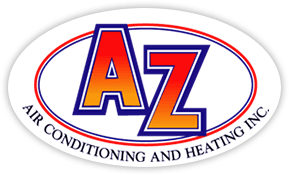
If you’re needing air conditioner installation in Los Angeles, you should also be investigating your new air conditioner’s SEER rating.
SEER is short for Seasonal Energy Efficiency Rating. Basically, it gauges how effective your air conditioner is at turning electricity into cold air. A greater number means your air conditioner is more efficient, which is good for your cooling bills.
However, there are many different solutions on the market for air conditioners. And a greater SEER ranking often involves a higher price tag. So, how can you find out which one is best for your house?
At AZ Air Conditioning and Heating, we provide a free, no-pressure home comfort analysis. You can request one by contacting us at (877) 559-6081. Our knowledgeable air conditioner installers will work with you to help you choose the right air conditioner for your home. Plus, they’ll also offer you a free, no-obligation estimate.
For the time being, let’s go over SEER ratings and how they can affect your home’s comfort. And your electrical expenses.
Does SEER Rating Even Matter?
In 2016, the federal government developed new SEER guidelines. New air conditioners are mandated at least 13 SEER in the north United States and 14 SEER in the southeast and southwest. If you don’t know when you had your air conditioner installed or what its SEER number is, you can locate the sticker on the system outside your house. If you can’t see the sticker, you can get in touch with us at (877) 559-6081 for help.
If your air conditioner was installed prior to that date, it’s probably much less efficient. Air conditioning technology has swiftly evolved in the past couple of years, with huge progress in energy efficiency and smart home capacity. Pairing your new air conditioner with a smart thermostat could help you spend less on AC expenses, as the thermostat can intuitively change your temperature settings when you’re gone.
If your present air conditioner has a SEER rating between 8 and 10, adding a 14-SEER system could save you close to 30–50% on annual electricity bills. Your savings relate to your air conditioner size and your temperature settings.
Is a Higher SEER Rating Always Better?
An air conditioner with a higher SEER rating will be more efficient at consuming electricity for cooling. The most efficient models, which can go as big as 26 SEER, have ENERGY STAR® designation. This designation signifies the air conditioner matches EPA rules for energy savings and environmental conservation.
While ENERGY STAR air conditioners are often more expensive, you’ll usually get the difference repaid throughout the years through smaller electrical bills. These air conditioners, which are typically rated 16 SEER and up, need about 8% less power than other new units, according to ENERGY STAR.
One of the largest differences between a 14 SEER and 16 SEER is variable-speed capacity. A variable-speed air conditioner can operate at a number of speeds. This fine-tunes comfort for your house while keeping your electric expenses down. It can also keep temperatures and humidity more consistent, since it can work for longer without requiring a lot more power.
When installing a variable-speed air conditioner, you’ll want to ensure that your furnace or air handler is compatible. This is because your air conditioner uses this unit’s blower to send cool air around your home. Furnaces only last for approximately 20 years, so if yours is around that mark, we advise getting furnace installation at the same time so you can get all the benefits of your variable-speed air conditioner.
When you’re set to replace your air conditioner, the cooling professionals at AZ Air Conditioning and Heating are ready to support you. Reach us at (877) 559-6081 to book your free home comfort analysis right away.
